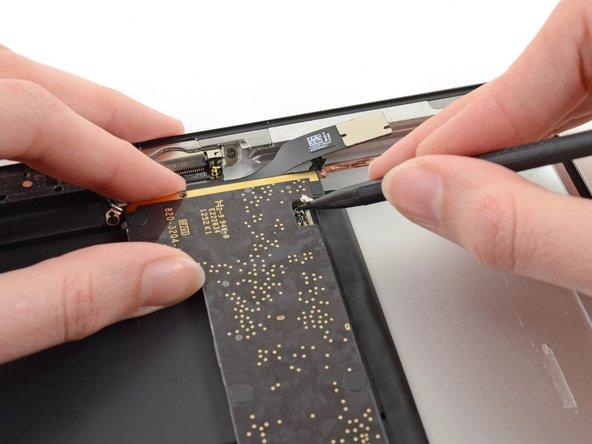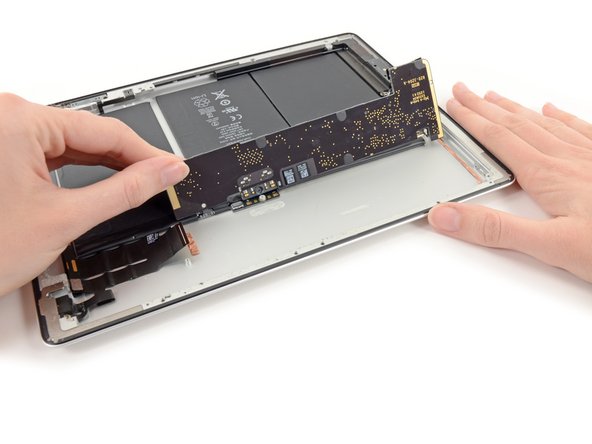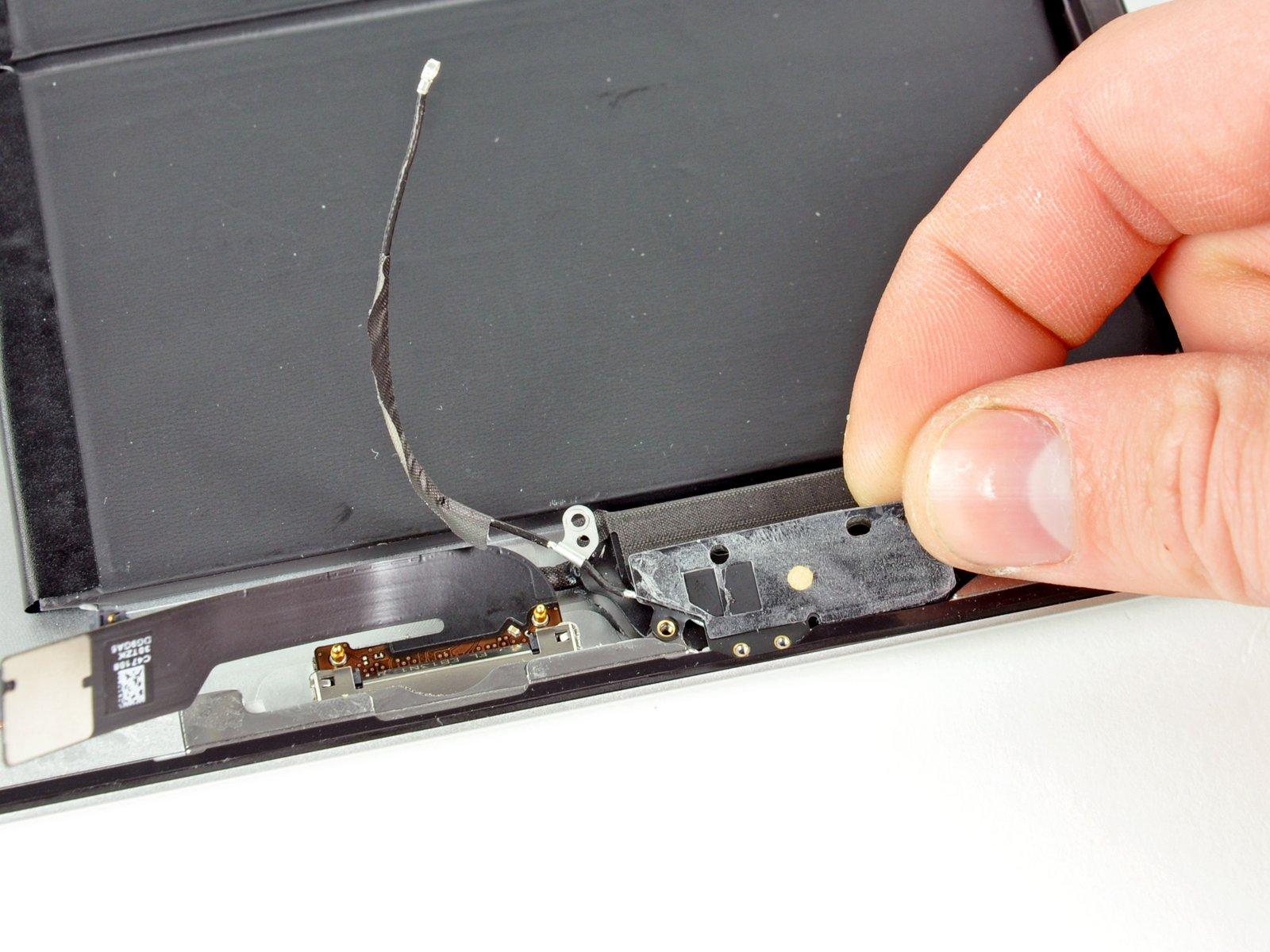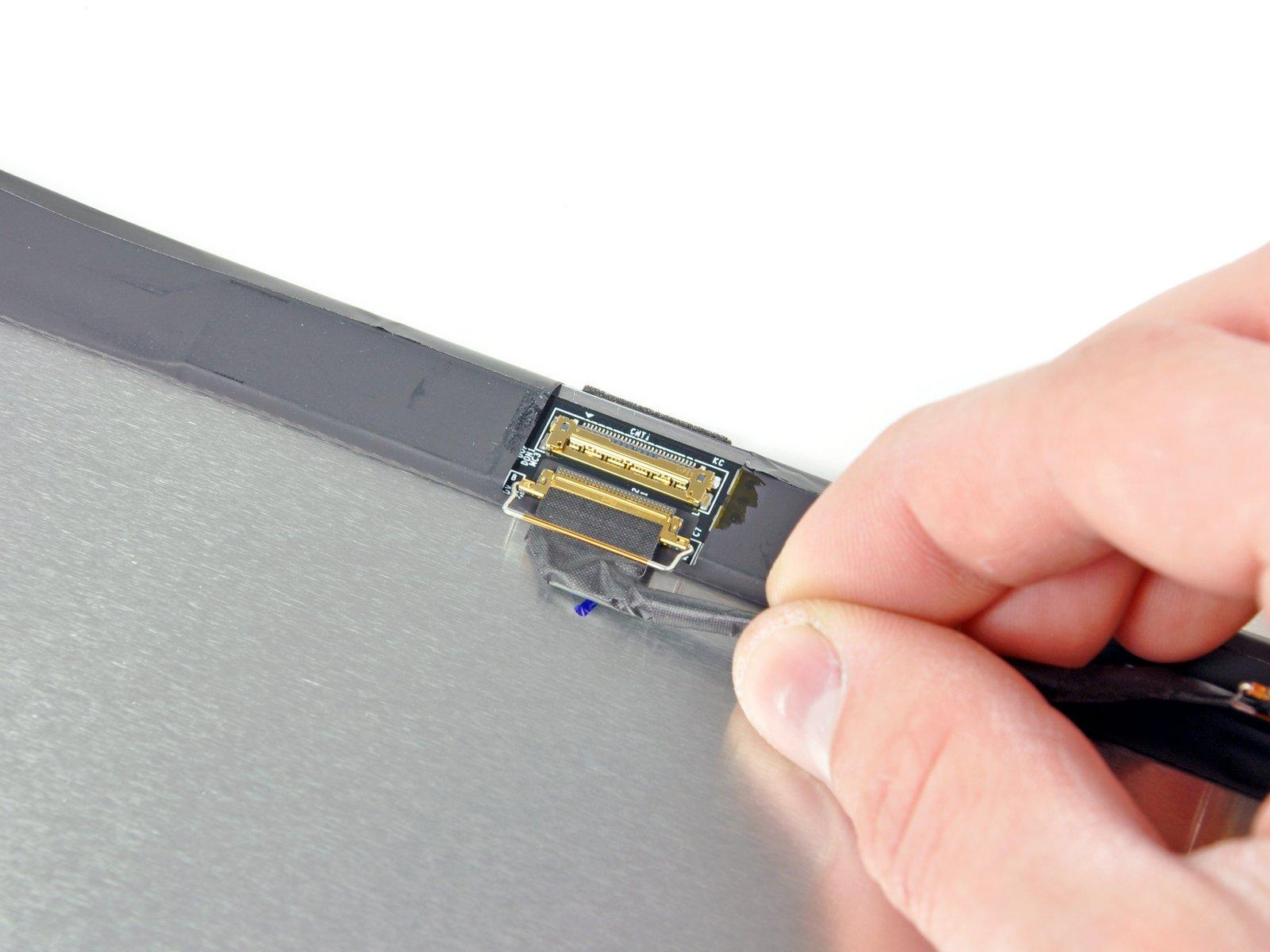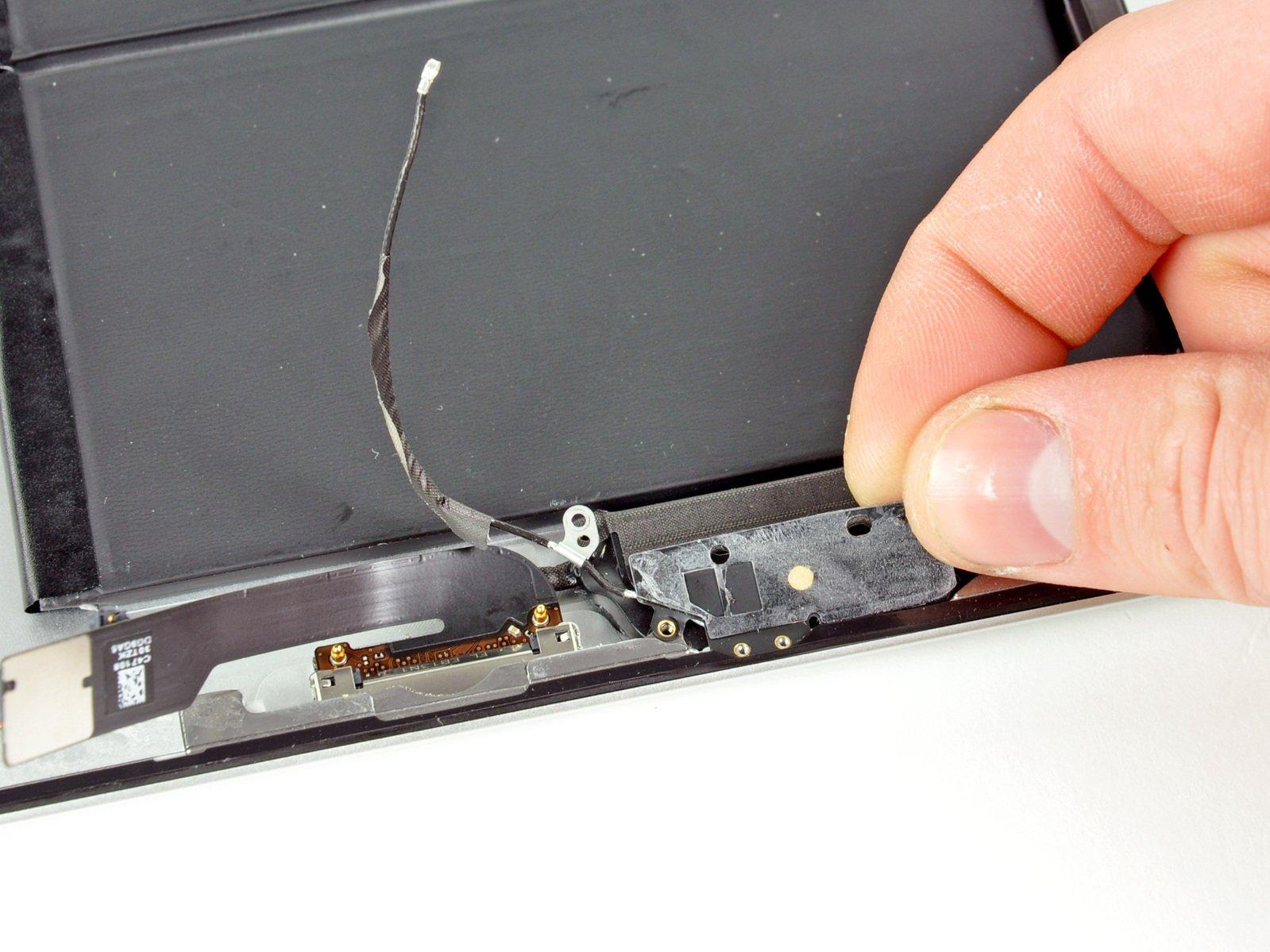DIY iPad Wi-Fi EMC 2560 Logic Board Replacement Guide
Duration: 45 minutes
Steps: 46 Steps
Heads up! Always remember to unplug your device and take a moment to ground yourself before diving in. Safety first, friends! If you need help, you can always schedule a repair.
Follow this guide to swap out the logic board—Spock would totally approve of your skills!
Step 1
Before you start, give your microwave some love – clean it out to avoid any stuck-on gunk messing with your iOpener.
– Pop that iOpener right in the middle of the microwave and let it warm up like it’s lounging on a sunny beach!
Tools Used
Step 2
Keep an eye on that iOpener during your repair adventure! Overheating can cause it to pop, and nobody wants that. Aim to keep it below 100˚C (212˚F) for a safe and successful repair.
If your iOpener looks like it’s been hitting the gym and has puffed up, give it a break! Touching a swollen iOpener is a no-go.
If the middle of your iOpener is still too hot to handle, no worries! Just keep using it while it cools down a bit before you give it another heat-up. A well-heated iOpener should stay toasty for about 10 minutes.
– Give your iOpener a cozy thirty seconds in the microwave to warm it up.
– As you work through the repair, keep that iOpener toasty by popping it back in the microwave for another thirty seconds whenever it starts to cool down.
Tools Used
Step 3
Careful there! The iOpener can get pretty toasty, so handle it with care. An oven mitt can be your best buddy here if things get too hot to handle!
– Take the iOpener out of the microwave, gripping it by one of the flat ends to keep your fingers safe from the toasty center.
Tools Used
Step 4
No microwave? No problem! Just pop that iOpener into some boiling water to get it nice and warm.
– Grab a pot or pan and fill it up with enough water to give your iOpener a nice bath.
– Get that water boiling! Once it’s bubbling away, turn off the heat.
– Carefully drop the iOpener into the hot water for about 2-3 minutes. Make sure it’s taking a good soak in there!
– Using tongs (safety first!), pull the warmed iOpener out of the water.
– Give the iOpener a good towel dry, because nobody likes a soggy tool.
– And voilà! Your iOpener is all set and ready to roll! If it needs a little more heat, just repeat the water boiling magic and let it soak again for 2-3 minutes.
Tools Used
Step 5
Don your safety glasses to keep those peepers safe, and watch out for that LCD screen—it’s more delicate than it looks!
– If your screen is sporting some cracks, let’s keep those shards in check and protect your fingers while you work by applying some tape over the glass.
– Grab some clear packing tape and lay it down in overlapping strips across the iPad’s display until it’s completely covered—think of it as a cozy blanket for your device!
– Follow the rest of the guide as best as you can. Just a heads up, once the glass starts breaking, it might keep on cracking a bit more, so you might need a metal prying tool to help scoop out the pieces.
Step 6
Just a friendly heads-up: while you’re getting your hands dirty with this repair, it’s a great idea to rock some safety glasses. They’ll keep you safe from any sneaky glass shards that might try to escape. Safety first, right?
– Gently place the iOpener flat against the right edge of your iPad, making sure it’s nice and snug for optimal contact between the iPad and the iOpener.
– Give it about 90 seconds to work its magic before you start prying open that front panel.
Tools Used
Step 7
It might take a bit of elbow grease to slide the wedged tip of the opening tool between the glass and plastic. Just take your time and be gentle, wiggling that plastic opening tool back and forth as needed. You’ve got this!
– Check out that tiny gap in the iPad’s adhesive ring up in the upper right corner—it’s about 2.0 inches (~5 cm) from the top. That’s your cue to get started!
– Now, let’s get aligning! Position your tool near the mute button and gently slide the tip of a plastic opening tool into that little gap between the front glass and the plastic bezel. Just the tip will do—enough to give that crack a little nudge.
Step 9
– With the plastic opening tool snugly positioned between the front glass and the plastic bezel, gently slide a plastic opening pick into that little gap right next to the tool. You’ve got this!
Step 10
– Gently take out the plastic opening tool from your iPad, and slide the opening pick a little deeper under the front glass, aiming for about 0.5 inches. You’re doing great!
Step 12
This adhesive means business! You might need to put in some muscle, so take it slow and steady.
If you can spot the tip of the opening pick peeking out from under the front glass, gently pull it out a smidge. While it’s totally safe to use the pick this far down, it might leave some adhesive residue on the LCD. Just a heads up!
– While you’re warming up the bottom edge with the iOpener, let’s start peeling back that adhesive from the right edge of the iPad.
– Gently slide the opening pick down the edge of the iPad, and watch the adhesive give way as you go.
Tools Used
Step 13
As you peel away the adhesive, you might want to slide that warm iOpener back to the right edge of the iPad. This little move will depend on how long the iPad has been cooling off while you’ve been working your magic.
– If your opening pick is feeling a bit sticky with the adhesive, just give it a little roll along the side of the iPad. Keep at it, and you’ll break free that stubborn adhesive in no time!
Tools Used
Step 14
– Before you pop out that first opening pick from the bottom corner of your iPad, sneak in a second pick under the right edge of the front glass. This little move will keep the adhesive from getting all clingy again!
– Give your iOpener a little reheat and then slide it up to the top edge of the iPad. You’re on the right track!
Tools Used
Step 15
The Wi-Fi antenna is snugly secured at the bottom right edge of the iPad’s rear case with screws and a cable. Given the Wi-Fi antenna’s position, it’s super important to be extra careful during this process; otherwise, you might accidentally cause some permanent damage to the antenna. Stay sharp and take your time!
– Alright, folks, it’s time to proceed with a little extra care here.
– You’ll need to carefully peel away the adhesive that’s holding the antenna to the front panel, all while making sure not to harm the fragile bits that connect the antenna to the bottom of the iPad. So, let’s take it step by step and keep things smooth!
Step 16
Hey there! Just a quick heads-up: don’t slide that pick too far past the bottom right corner. You might accidentally give the Wi-Fi antenna a little too much love, and we wouldn’t want that!
– Gently slide the opening pick around the bottom right corner of your iPad to peel away that pesky adhesive.
Step 17
Take care while gliding the opening pick along the bottom right edge of the front panel. The Wi-Fi antenna is sneaky and hangs out near the corner, so be gentle! If the adhesive gets released the wrong way, it could end up severed, and we definitely don’t want that.
Keep that pick snugly under the front glass—just a little peek is all you need! Pull it out gently, leaving about 1/8″ (3 mm) of the tip still hanging out for a smooth ride.
– Gently glide the tip of the opening pick along the bottom edge of your iPad, letting it work its magic to release the adhesive over the Wi-Fi antenna. Remember, if you need help, you can always schedule a repair.
Step 18
– After you’ve navigated past the Wi-Fi antenna—about 3 inches (75 mm) from the right edge, or just beside the home button—slide that trusty opening pick back in all the way.
– Now, give the pick a gentle nudge to the right, and watch as it frees the adhesive holding the Wi-Fi antenna snug against the front glass.
Step 19
Keep your iOpener chill, and don’t heat it for more than a minute at a time. Give it a breather of at least two minutes before giving it another go!
– Keep working that adhesive along the bottom of your iPad! Gently pull the opening pick out far enough to navigate around the home button, then slide it back in, making sure to go about 1/2 inch (10 mm) deep once you’ve passed the home button. You’re doing great!
Tools Used
Step 20
– Keep on peeling that adhesive along the bottom edge of your iPad like a pro!
– Make sure to leave that opening pick snugly in place under the front glass near the home button.
Step 22
If your adhesive has cooled down too much, just swap in a fresh iOpener along the top edge and keep at it! And if that iOpener is feeling a little chilly, give it a quick reheating to get back in action.
– Gently slide the opening pick along the top edge of your iPad, giving it a little tug to navigate around the front-facing camera bracket.
– Keep in mind, the adhesive here is quite strong, so you might need to apply some elbow grease. Take your time and be cautious to avoid any slips that could lead to mishaps with your iPad.
– If the opening pick seems to be stuck in the adhesive, try ‘rolling’ the pick as demonstrated in step 9.
Tools Used
Step 23
If the adhesive is nice and warm, go ahead and take the iOpener off the iPad for easier handling. But if it’s still feeling a bit clingy, just give the iOpener another heat-up and place it on the left edge while you work your magic.
– Keep peeling that adhesive along the top edge of your iPad, and smoothly glide the opening pick around the top left corner. You’ve got this!
Tools Used
Step 24
The digitizer cable is hanging out about 2 inches (50 mm) from the bottom of your iPad. So, when you’re sliding that pick, be sure to stop when you reach around 2.25 inches (60 mm) from the bottom. Keep it smooth and steady!
– Gently glide that opening pick along the left edge of your iPad, letting it work its magic on the adhesive. It’s pretty thin here because of the digitizer running along that side, so keep it cool and don’t push too deep (just a max of 1/2 inch or 10 mm) to avoid any mishaps with the digitizer. You’ve got this!
Step 25
Be super careful here! The bottom of the digitizer cable is just about 1 inch (25 mm) away from the bottom of the iPad. Take your time and be gentle, so you don’t accidentally cut this cable.
– With your trusty opening pick still nestled under the bottom edge of the iPad, go ahead and gently free the adhesive at the bottom left corner. You’ve got this!
Step 26
– Take one of those handy opening picks and gently lift up the bottom right corner of your iPad. Once it’s popped up, give it a little pinch with your fingers to hold it steady.
Step 27
Watch out for any leftover sticky stuff that might still be clinging on, and grab an opening pick to slice through any adhesive that could be keeping the front panel in place.
– Grab your iPad by the top and bottom right corners and gently twist that front glass away from the device like you’re unveiling a masterpiece.
– When it’s time to put everything back together, take a moment to use a microfiber cloth and some compressed air to give that LCD a little TLC, wiping away any dust or fingerprints before you seal the deal with the glass.
Step 28
– Let’s get started by unscrewing those four 2.0 mm Phillips screws holding the LCD snugly to the rear case. You got this!
Step 29
The front panel ribbon cables are tucked away under the LCD. To get to them, just give the LCD a little flip and set it aside for a moment. You’ve got this!
– Gently lift the LCD from the edge nearest to the volume buttons and flip it out of the rear case, just like you’re turning a page in your favorite book.
– Carefully place the LCD face down on the front panel, treating it like the precious gem it is.
Step 30
Make sure you’re lifting the hinged retaining flaps, not the sockets themselves. You’ve got this!
Check out the second picture to spot the retaining flaps marked in red!
– Gently use the edge of a plastic opening tool to lift up the retaining flaps on the two digitizer ribbon cable ZIF sockets. You’ve got this!
Step 31
– Grab a plastic opening tool and gently work it along the edge to detach the digitizer cable from the shields on the logic board. Easy does it!
– With a bit of care, slowly peel the digitizer cable away from the adhesive that’s holding it to the side of the rear case. You’re doing great!
Step 32
– Gently yank that digitizer ribbon cable straight out of its cozy sockets on the logic board. You’ve got this!
Step 33
To get that front panel assembly off, you’ll want to gently slide the ribbon cable out from between the case and the LCD. Just give the LCD a little nudge to create some space, and you’ll be on your way!
– Start by lifting the LCD from the edge that’s farthest from the digitizer cable and gently swing it back toward the rear case—think of it like you’re closing a book with a little flair.
– While you’re holding the LCD up, carefully slide the front panel away from the iPad. Just a heads up, watch out for the digitizer cable—it’s a bit of a drama queen when it gets snagged on the rear case or LCD.
Step 34
To dive into the iPad’s inner workings, we first need to gently pop the LCD out of its cozy case.
– Gently lift the LCD from the edge closest to the volume buttons and flip it out of the rear case—think of it like turning a page in a book, but way cooler!
– Place the LCD face down on a clean surface. A soft cloth underneath is a smart move to keep those scratches at bay.
Step 35
Just a heads up—when you’re disconnecting the connector, remember to gently wiggle it out instead of pulling it straight up. We don’t want any surprises!
– Grab your trusty plastic opening tool and gently nudge that display data cable lock upwards. It’s like giving it a little lift!
– Now, with a smooth motion, pull the display data cable right out of its cozy socket. You’re doing great!
Step 37
– First things first, if there’s any tape hanging out on that dock connector cable, grab your trusty plastic opening tool and gently remove it. No need to be rough!
– Now, take that same plastic opening tool and use the edge to carefully lift the dock connector cable’s connector from its cozy home on the logic board. A little finesse goes a long way!
– Finally, peel that dock connector ribbon cable away from the rear panel like you’re unveiling a surprise. You’ve got this!
Step 38
Handle with care! Make sure to gently pry just the connector and not the socket on the logic board, or you might end up causing some serious socket drama.
– Gently lift the speaker cable connector straight up from its cozy spot on the logic board.
Step 39
– Time to get your screwdriver ready! First, let’s take out these screws:
– Next up, gently remove that metal bracket from the back of the case. You’ve got this!
Step 40
– If you’ve got some tape hanging out near the headphone jack/control board cable, grab your trusty tweezers and gently peel it away. It’s like unwrapping a present, but way cooler!
Tools Used
Step 41
Remember to gently pry upward on the hinged retaining flap, not the socket itself. You’ve got this!
– Grab your trusty spudger and gently lift the retaining flap on the headphone jack/control board cable ZIF socket. You’ve got this!
Tools Used
Step 42
– Gently slide the spudger’s tip under the headphone jack/control board ribbon cable to give it a little nudge and disconnect it. You’re doing great!
Tools Used
Step 43
– First things first, grab your trusty screwdriver and tackle those two 2.1 mm Phillips screws holding down the second metal bracket right next to the digitizer cable socket. You’ve got this!
– Once those screws are out of the way, gently lift that metal bracket off the rear case like a pro.
Step 44
– Gently slide the edge of a plastic opening tool under the logic board and carefully lift it away from the sticky adhesive that’s holding it to the back case. You’ve got this!
Step 45
Hold your horses! You don’t want to yank this out just yet—there’s still an antenna cable hanging on for dear life.
– Carefully lift the logic board out of the back case and gently flip it toward the battery like you’re turning a page in your favorite book.
Step 46
– Grab your trusty spudger and gently nudge the Wi-Fi antenna connector upwards to free it from its cozy spot on the logic board.
– Now, it’s time to lift the logic board out of the case with care.
Tools Used
